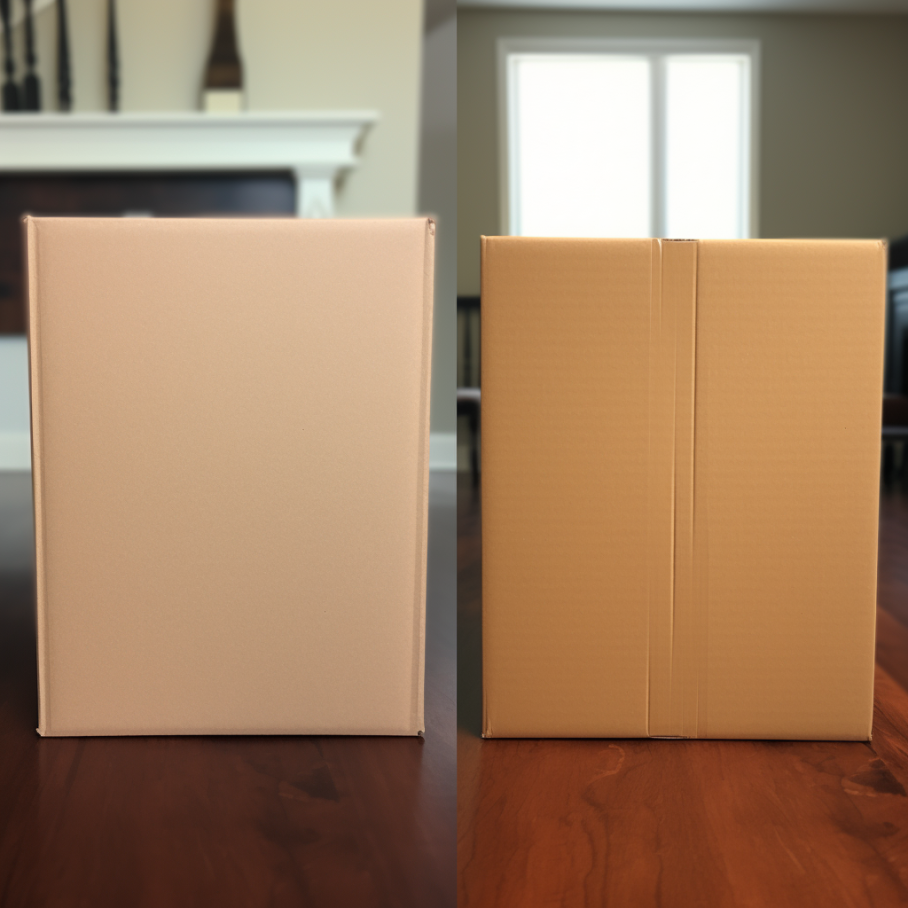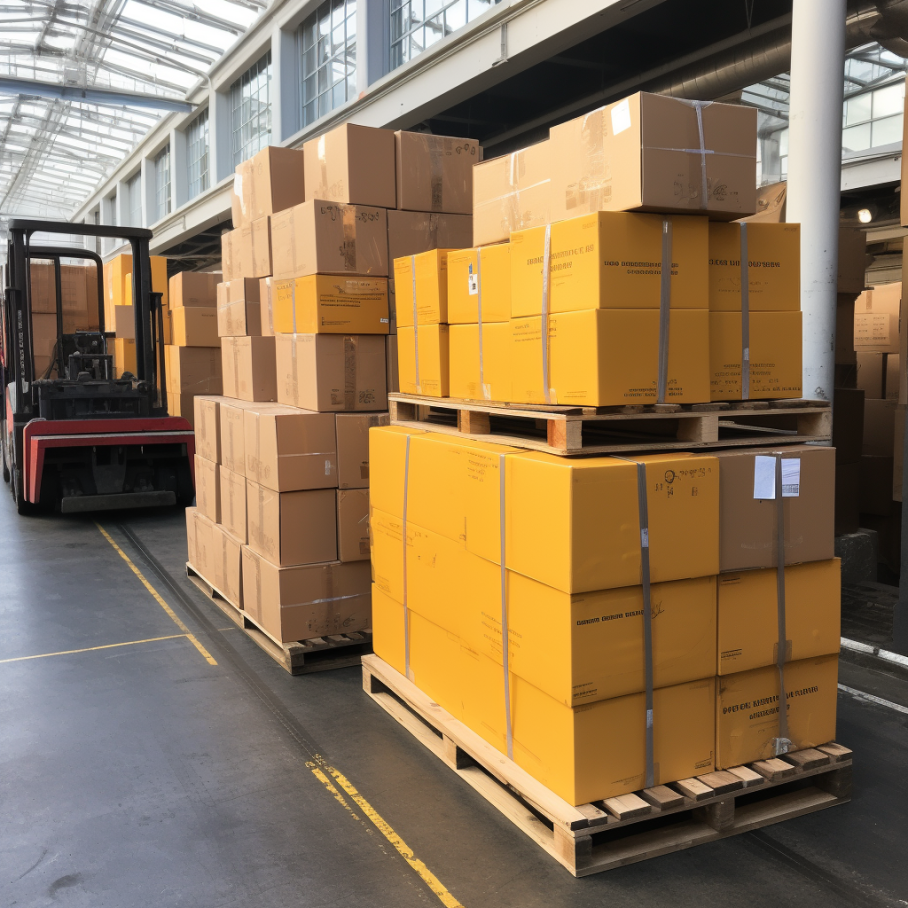When you've poured your heart into crafting a product, the last thing you want is for it to arrive at your customer's doorstep damaged. Imagine their disappointment. The moment of joy and anticipation turns into frustration, and this could mean a negative review or a lost customer.
Think of your product’s packaging as its first line of defense. As an online shop owner, have you ever stopped to ask yourself: "Is my box strong enough to protect my products?"
Ensure your product's packaging is up to the task of safeguarding your goods during transit by considering key factors that influence box durability. Select robust materials like corrugated cardboard, matching weight-bearing capacity to your product, choosing materials with high impact resistance, and ensuring boxes resist compression during stacking.
This is an essential question that shouldn't be overlooked. After all, a good product deserves excellent packaging. Let's dig into why and how to ensure your boxes are up to the task. It’s easier than you might think, and it’s certainly worth your time.
The Factors Influencing Box Durability

Choosing the right box for your product isn’t just about size and appearance, it's about durability too. An intact product is the best first impression you can make on a customer.
To help ensure your products arrive in excellent condition, every single time, different factors influencing the durability of your packaging should be considered. These include material strength and protection, weight-bearing capacity, impact resistance, stacking and compression, and longevity and reusability.
1. Material Strength and Protection:
Not all materials are created equal; both the type and quality of the material can significantly impact a box's ability to protect your product. Corrugated cardboard, for example, is known for its rigidity and sturdiness. It is an excellent choice for many products as it can withstand pressure and minimize the risk of deformation during transport.
Another main consideration is protection. It is good to keep in mind that the thickness of your packaging material is directly proportional to the level of impact protection it offers.
For this reason, consider the journey your package will undertake; if it is likely to experience bumpy rides or heavy handling, a thicker box might be a wise choice. A thicker box provides a broader buffer zone, absorbing shocks and keeping your products safe.
Some packaging materials offer additional protective features, such as shock absorption and insulation. These can be specifically beneficial for fragile or sensitive items, which need a material with better shock absorption qualities.
On the other hand, less fragile items might do well with a lighter, thinner material. The goal is to match your packaging to your product's needs to ensure it arrives at your customer’s door in perfect condition.
2. Weight-Bearing Capacity:
Weight-bearing capacity refers to the maximum weight a box can carry without collapsing or losing its structure. This is particularly important if you're shipping heavy products or stacking packages during shipping.
The weight-bearing capacity of a box is determined by a combination of factors, including the material type, its thickness, and the design of the box. For instance, a corrugated cardboard box with a double-wall design will bear more weight than its single-walled counterpart.
Choosing a box with an appropriate weight-bearing capacity is necessary. If the box is not strong enough to handle the product's weight, it could lead to product damage and a disappointing unboxing experience. On the other hand, using a box that far exceeds the necessary weight-bearing capacity might mean unnecessary costs and materials.
Furthermore, you should consider paying attention to the weight-bearing capacity of your box because it has direct implications when it comes to stacking and long-term storage. If a box is not sturdy enough to hold the weight of another package when stacked, it could compromise the structure, potentially damaging the product inside.
Boxes with a high weight-bearing capacity are also essential for long-term storage, as they can withstand the weight of the product over time without buckling. This is especially crucial when it comes to industrial and warehouse storage solutions. In such environments, products are typically stored in large quantities and are stacked high. Therefore, strong boxes capable of safely handling these weights are a must.
Finding the sweet spot in terms of weight-bearing capacity requires understanding the weight of your product and the journey it will take. From there, you can choose the right box that confidently carries your product all the way to your customer's hands.
3. Impact Resistance:
During a shipment's journey from your store to the customer's hands, the package may be subjected to bumps, drops, and jolts. This is where impact resistance, another important factor influencing box durability, comes into play.
Impact resistance is a packaging material's ability to absorb and resist forces caused by impacts, thereby protecting the product inside. Higher impact resistance means greater protection for your products during their transit journey.
Without sufficient impact resistance, even a minor drop or collision could result in unwanted damages to your product. This can lead to customer dissatisfaction and possible returns.
A box's impact resistance is determined primarily by the material and its thickness. Materials with rigid structures and cushioning effects, such as corrugated cardboard, offer excellent resistance against impact.
Moreover, a thicker box can provide more protection against deformation when subjected to force. Increased thickness equates to a larger buffer to absorb shocks, which can lead to higher resistance to deformation. This ensures your package maintains its shape and integrity, even when subjected to rough handling.

3. Stacking and Compression:
When your products are transported and stored, they aren’t always alone. They are often stacked in warehouses and carriers, surrounded by other packages. This stacking can lead to one of the most significant challenges to a box's durability — compression.
Stacking and compression are the forces exerted on a box when other packages are stacked on top of it. The bottommost box, which bears the maximum weight, is subject to the highest compression. If a box isn't sturdy enough to withstand this force, it can result in buckling, with possible damage to the product inside.
The material and design of a box play a significant role in its resistance to compression. Boxes made from sturdy materials like corrugated cardboard and designed with corrugated patterns can resist compression more effectively. In addition, box designs engineered for stacking, such as additional layers or flutes, can enhance strength and prevent deformation under weight.
Just as with impact resistance, the thickness of your packaging material is also a key factor in its ability to withstand compression. Thicker material offers more physical substance to bear the weight of stacking and reduces the risk of deformation and product damage.
Effective stacking and compression resistance are important for efficient warehousing and space management. Boxes that can withstand weight without collapsing allow for better use of vertical space, leading to optimized storage solutions. This ability is particularly crucial in warehouse environments, where space efficiency translates directly to cost savings.
The good thing is that you can enhance a box's resistance to compression. Here are several strategies to prevent box collapse when stacked:
- Distribute Weight Evenly: Boxes stacked neatly and evenly distribute the weight across the entire surface area. This reduces the chance of any one box bearing excessive load.
- Re-enforce Corners: Corners are often the weakest points of a box. Adding corner reinforcements can significantly enhance the strength of your boxes and make them more resistant to collapse.
- Consider Interlocking Designs: Interlocking designs allow boxes to fit into each other, distribute the weight evenly, and prevent collapse.
- Choose Double-Wall or Triple-Wall Boxes: These boxes have extra layers of corrugated cardboard, which offer added strength and protection against compression forces.
- Use Box Dividers: If you're shipping multiple items in one box, dividers can distribute weight evenly and reduce the strain on any one part of the box.
- Select an Appropriate Box Size: A box that's too large may have too much empty space, making it more prone to buckling under weight. Choose a box size that fits your product snugly and leaves just enough room for protective padding.
- Optimize Box Alignment: When stacking, align the corners of the boxes precisely. Misalignment can cause uneven distribution of weight and increase the risk of collapse.
- Implement a Regular Box Inspection Routine: Regularly inspect your boxes for signs of wear and tear or weakness. Replace any compromised boxes in your stack to maintain the overall stack strength.
Remember, combining multiple strategies will provide the best protection against box collapse when stacked. It is essential to tailor these strategies to your specific product and shipping conditions for optimal results.

5. Longevity and Reusability:
In today's eco-conscious world, the durability of your boxes matters more than ever. But it's not just about protecting your products during transit. It's also about the lifespan of your box once it reaches your customers. Enter, the concepts of longevity and reusability.
The benefits of a reusable box extend beyond the single use. Environmentally, it reduces waste and the demand for new resources. Economically, a reusable box provides additional value to your customers and can save your business money over time, as you'll need fewer replacements for damaged boxes.
Investing in a durable, reusable box can also lead to substantial cost savings in the long term. While the upfront costs may be higher, durable boxes are more likely to withstand the rigors of shipping and handling, reducing the frequency of replacements.
How does it provide ongoing value to your customers? Boxes that are designed to last can be reused multiple times. This not only reduces your packaging costs but also enhances the customer experience by offering them a reusable storage solution.
In addition, a durable, reusable box can have a significant impact on your brand's image. It signals your commitment to sustainability and enhances your brand's reputation among increasingly eco-conscious consumers.
Several factors contribute to making boxes more durable over time. These include:
- Material: Choosing a robust material like corrugated cardboard can significantly improve box longevity.
- Design: Implementing features like double or triple walls, reinforced corners, and secure closures can enhance a box's lifespan.
- Handling and Storage Conditions: Boxes stored properly in dry, moderate-temperature environments can retain their strength for longer.
In Conclusion: Durability Matters
When it comes to packaging, strength and durability are much more than just safeguards for your products. They're statements about your business's commitment to quality, customer satisfaction, and environmental responsibility.
A durable box ensures that your product holds up during shipping and arrives at its destination in perfect condition. When it is reusable, a durable box also lasts longer, requires less frequent replacements, and can be repurposed, which reduces the demand for new resources.
Furthermore, a strong, durable box enhances the unboxing experience for your customers, which is the first physical touchpoint they have with your product. It sets a positive tone for this experience, all while keeping your product safe.
In essence, investing in packaging durability is investing in your brand's reputation, your customer satisfaction, and a more sustainable future. So, as you make plans for your packaging solutions, remember to ask yourself: "Is this box strong enough to protect my product?"
If you need a durable box designed with the needs of modern sellers in mind, we have got you covered. At Impack, our Slimbox line, our new box packaging brings attractive, cost-effective, and convenient packaging right to your doorstep. It seeks to revolutionize your packaging solutions with its innovative design, helping you save on postage costs and win over customers with its appealing appearance, without additional effort.
For more details about our products, contact us today.







